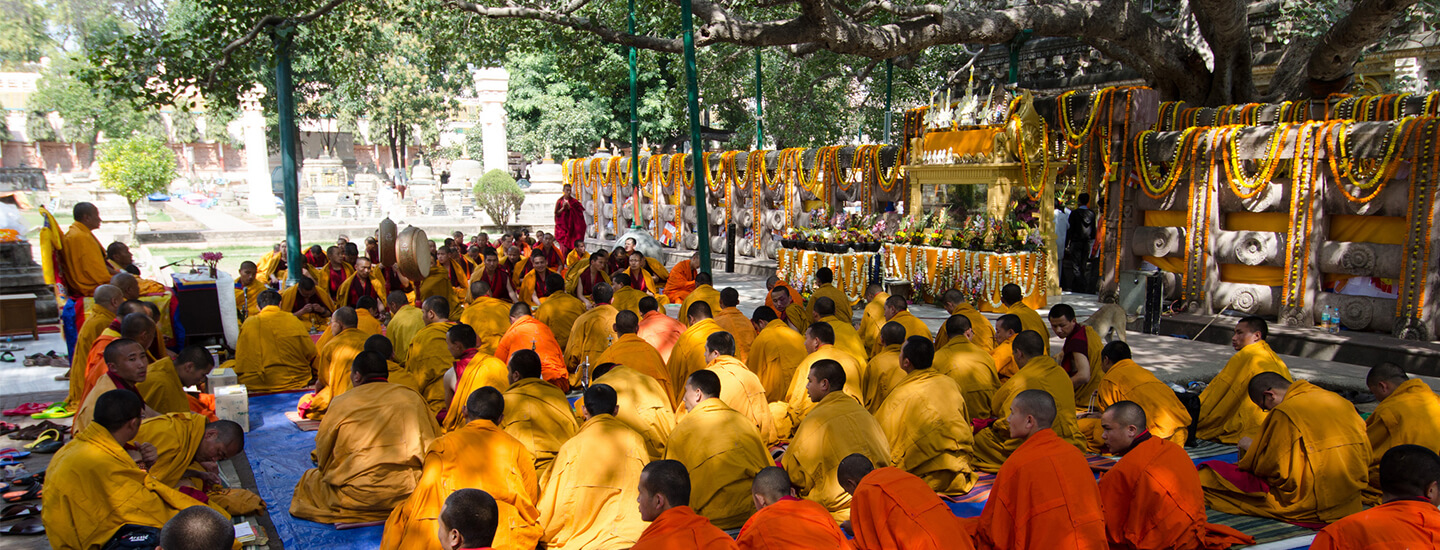The Mahabodhi Mahavihara
This temple symbolises the far reaching power of Buddhism. The temple is 52 metres high and built of brick and stucco with a soaring spire built over the square sanctum in the typical north Indian nagara style. The spire is crowned by an amalaka, an inverted lotus, topped by a miniature stupa and stone parasols called chhatravali. The temple is one of the oldest surviving brick structures in north India but it is very hard to date it as there have been extensive additions over many centuries. The oldest sections are the carved stone railings that are dated to the Mauryan period.
The walls of the temple have niches in which stucco images of the Buddha are placed and there are carvings on panels depicting the Jataka tales. In the lawns around the temple there are many small stone votive stupas, carved railings and images of the Buddha.
A flight of steps lead into the sanctum where there is a gilded golden image of the Buddha in the Bhumisparsa pose, with half closed eyes and slightly smiling lips, his right hand touching the ground. The image was established here by the Burmese royal family in the 19th century. Sit a while in the quiet reverential ambience and think of the Buddha as the air is filled with the soft chant of mantras and incense smoke spirals up from the altar and flowers lie piled up before the image.
Pilgrims also pray before a circular stone carved with the footprints of the Buddha called the Buddhapada that stands next to the gateway to the shrine. The feet are always strewn with flowers. It is said that the Buddha spent seven weeks in various places around the Bodhi tree and the Buddhapada is one of them. Another is a small temple called Animeshalochana at which he looked while meditating. The Buddha walked in deep thought and it is said that lotus flowers bloomed wherever he placed his feet. This is the Chankramana Chaitya or Jewel Walk – a platform running next to the temple wall with a row of carved lotuses.
The Ratnagraha Chaitya is another temple marking the spot where the Buddha spent time meditating. He then spent time under the shade of the Ajapala Nigrodha tree and the Rajayatana tree. The Buddha was so deep in thought that he was not conscious of the weather and when it began to rain, Nagaraja, the king of the serpents sheltered him under his open hood. This spot is marked by a picturesque lotus pool with an image of the Nagaraja in the centre called Muchalinda and at one time a university had stood beside this beautiful water body.
It was after these seven weeks of concentrated thought that Siddhartha Gautama felt he was ready to talk to the world and make it listen to his unique philosophy. Then he left Bodh Gaya and headed for Rishipattana that stood in the outskirts of Benaras. Today we call this place Sarnath.


